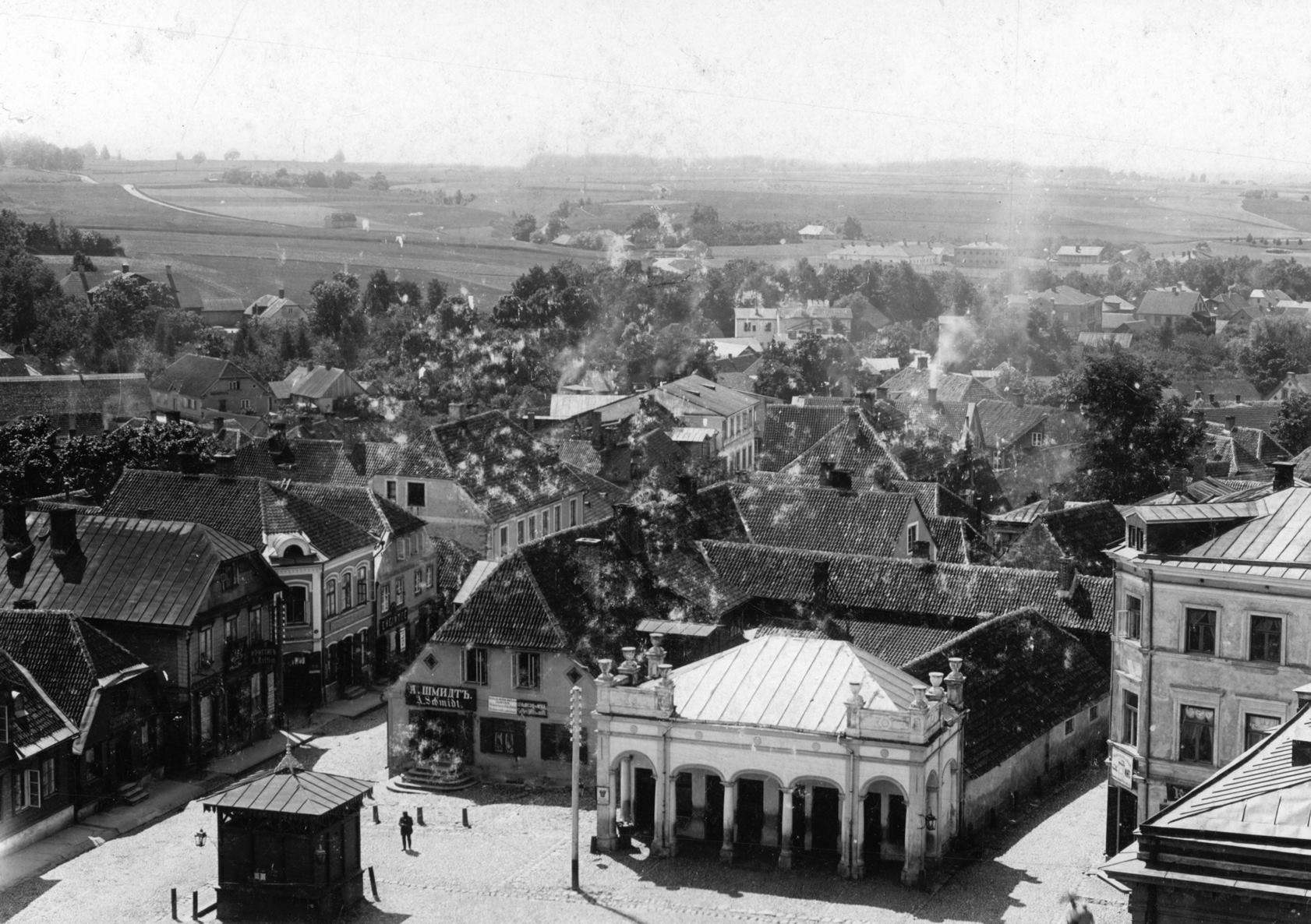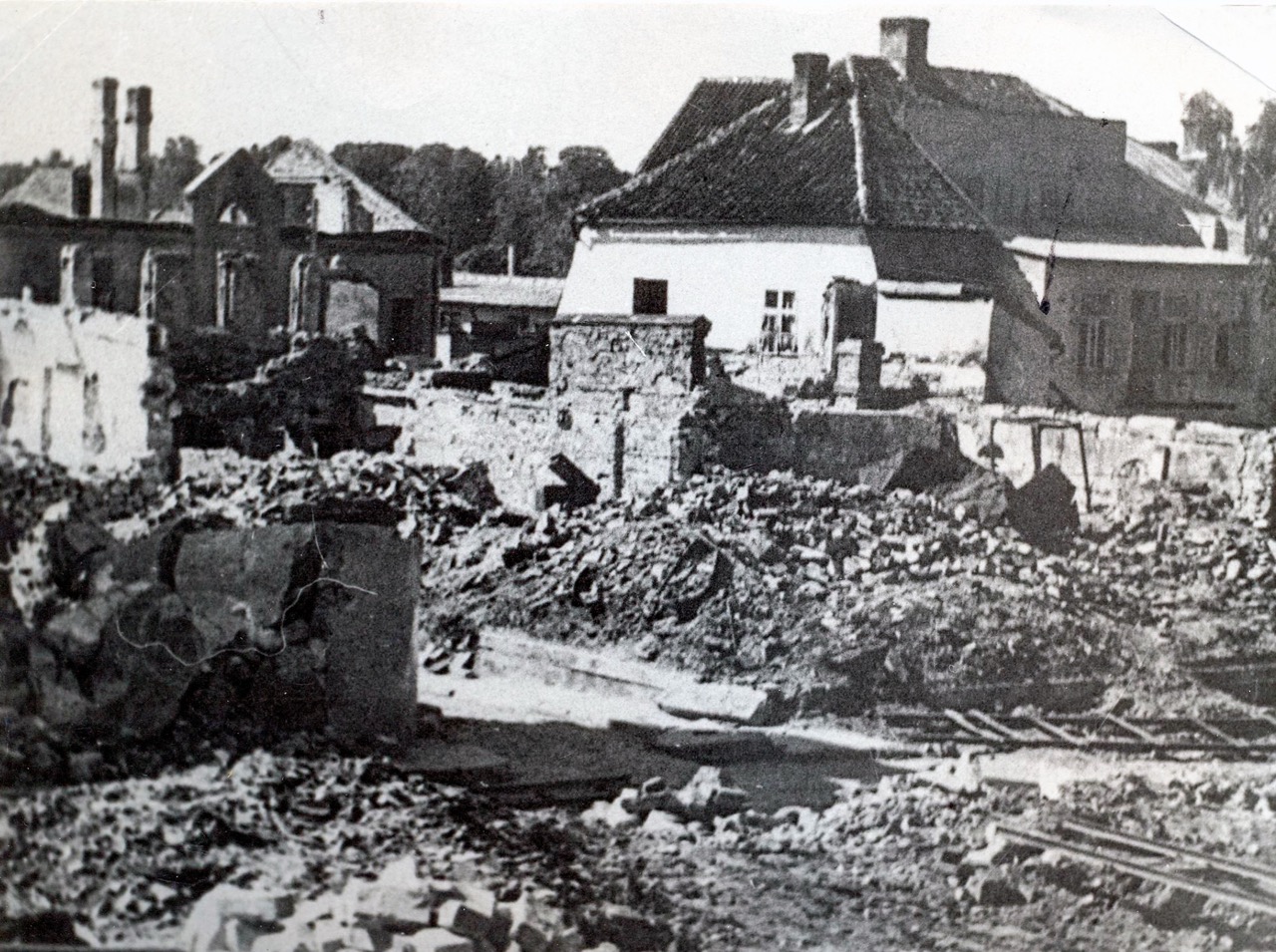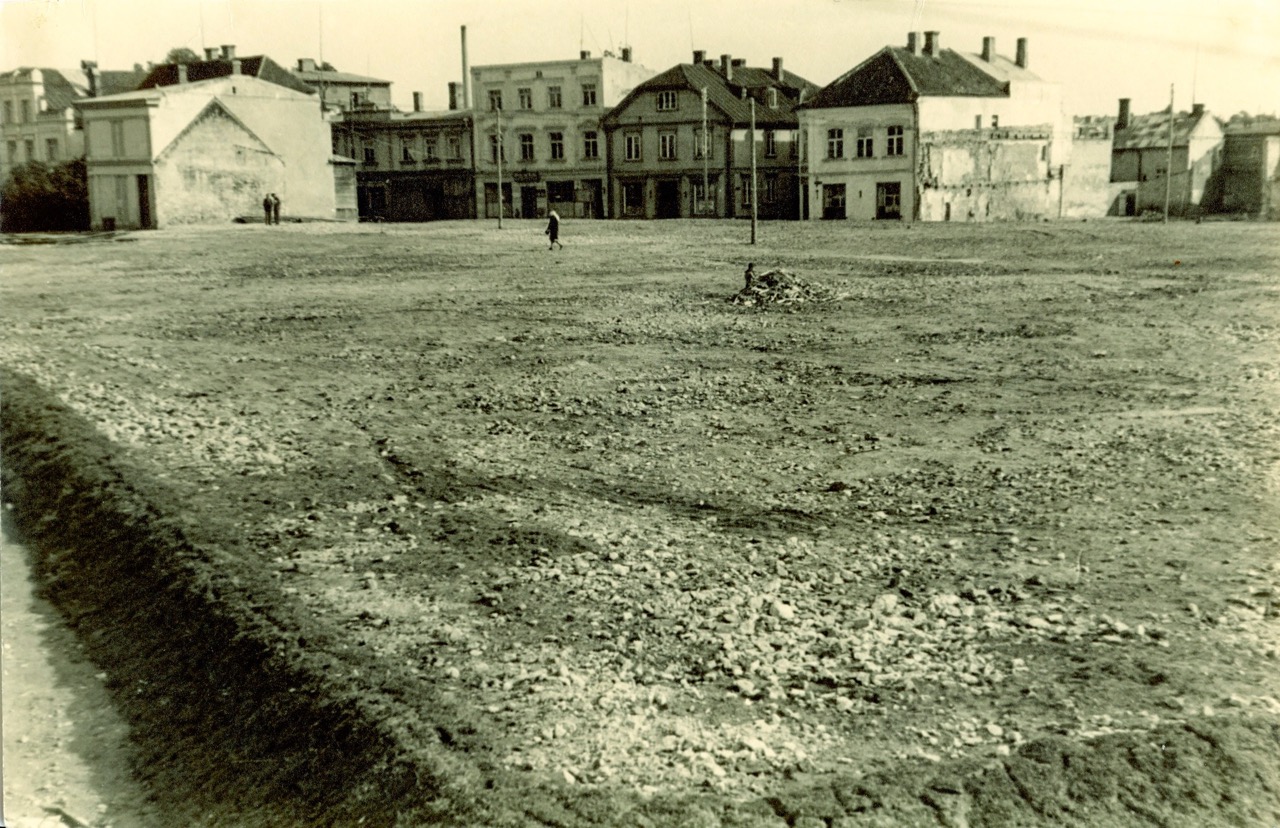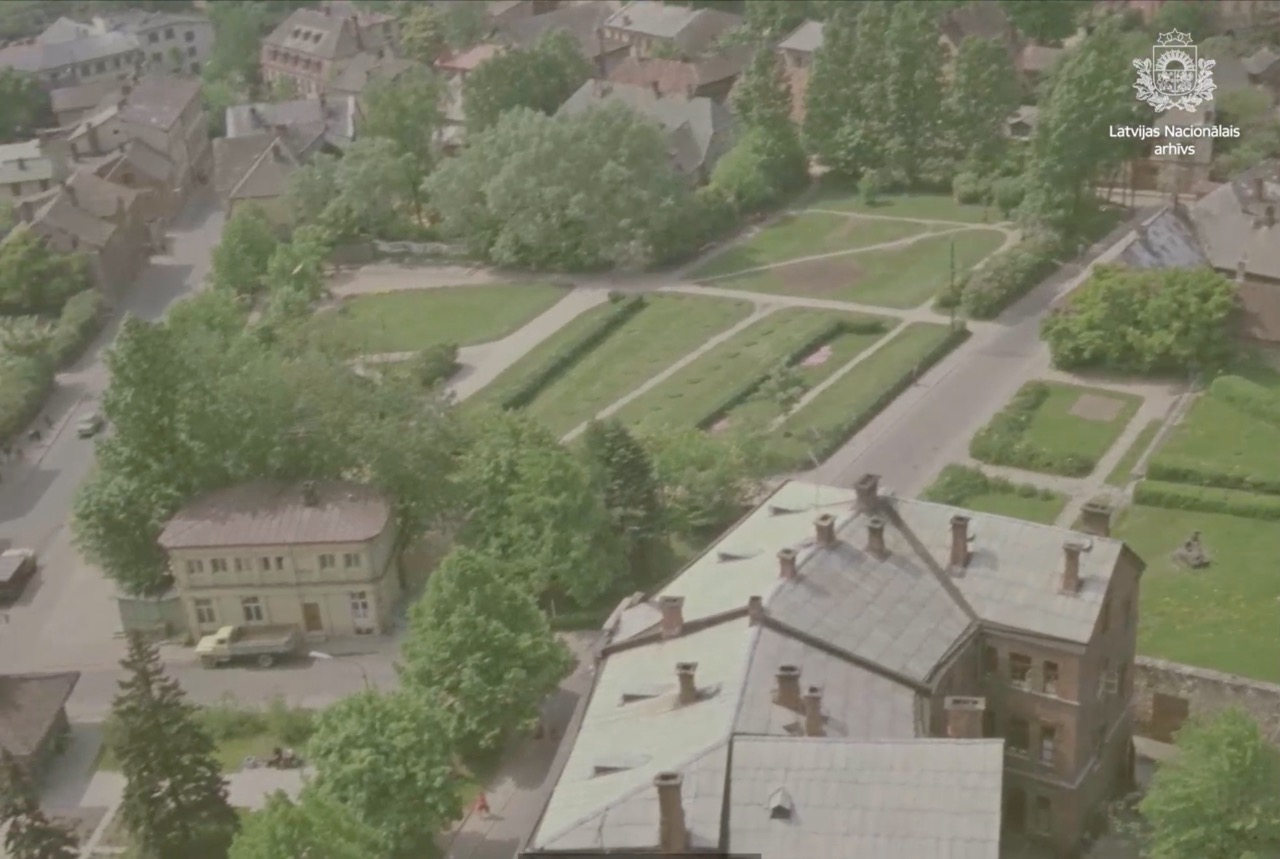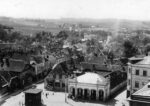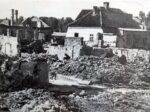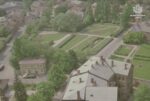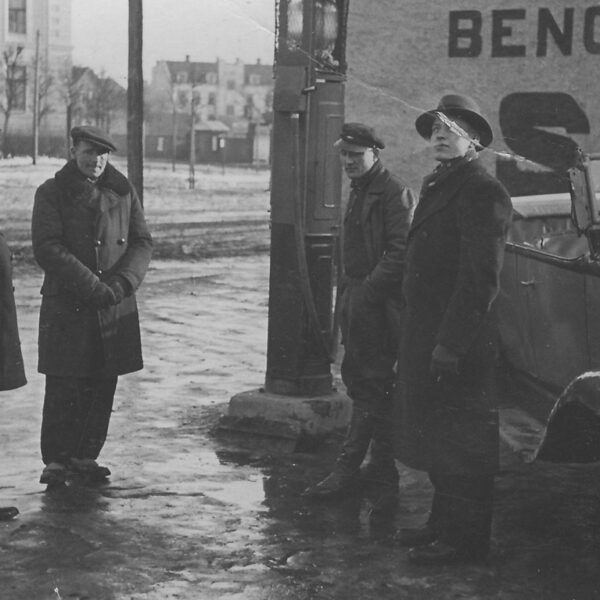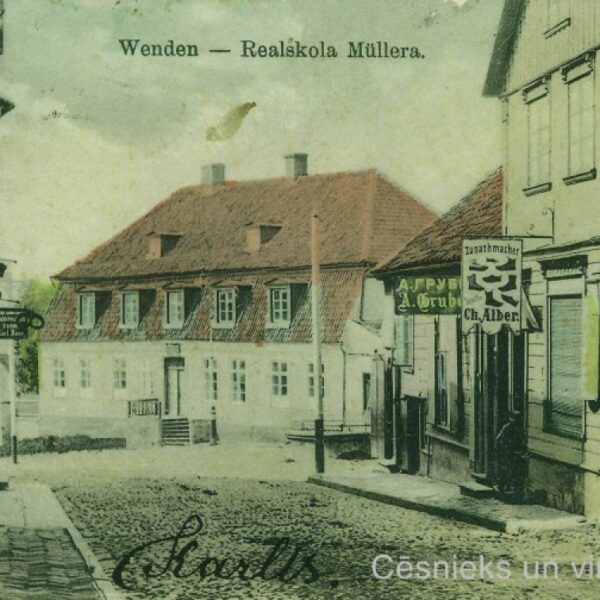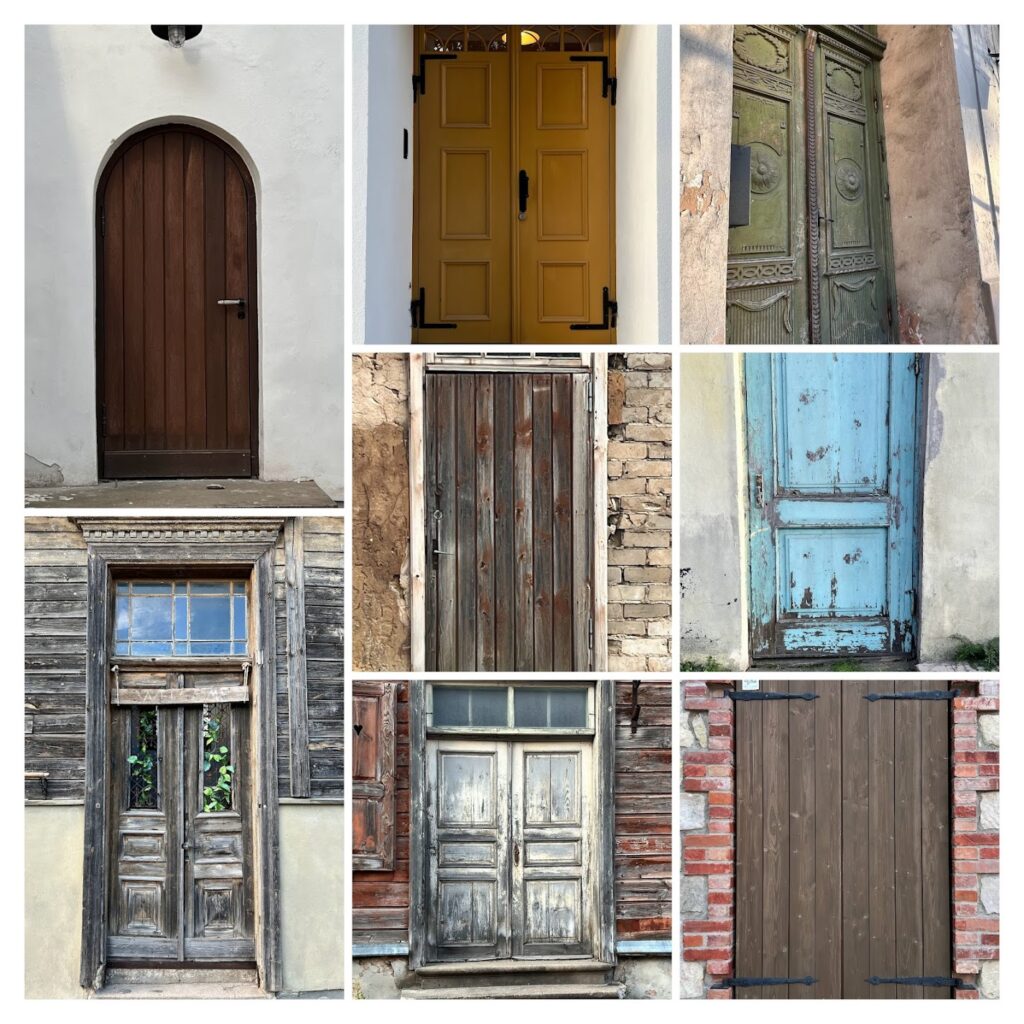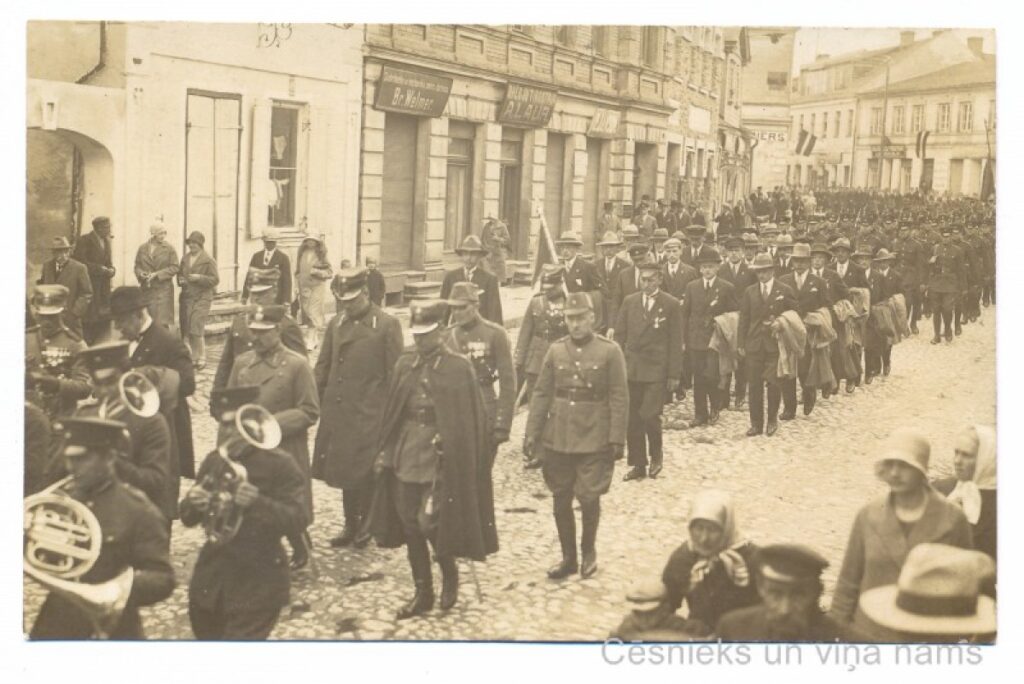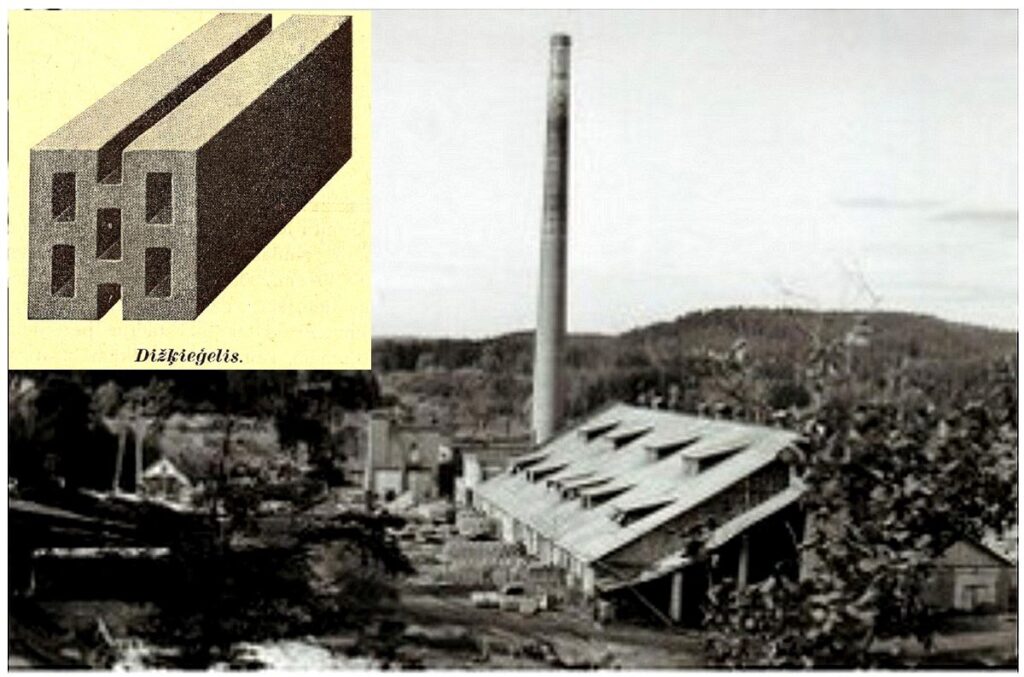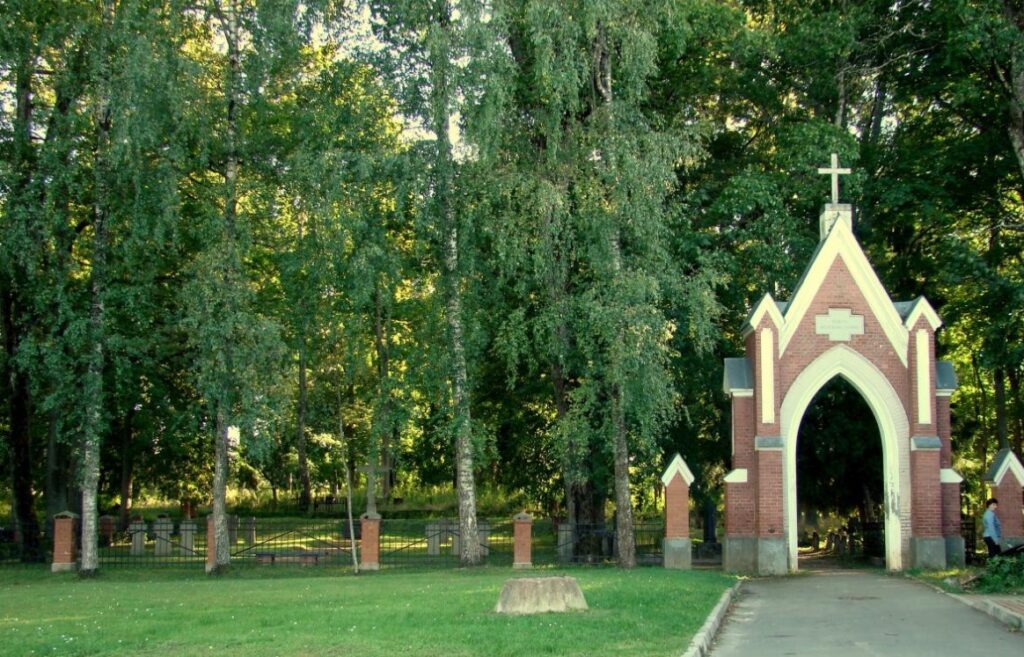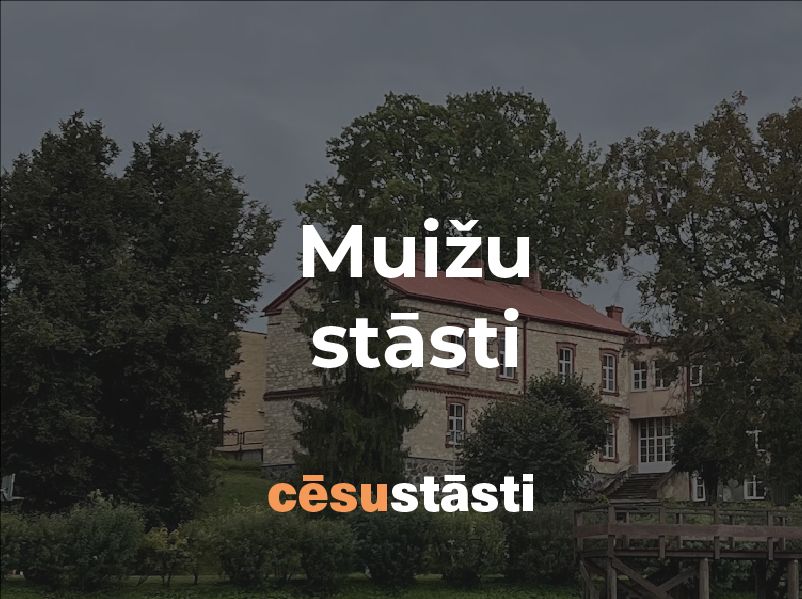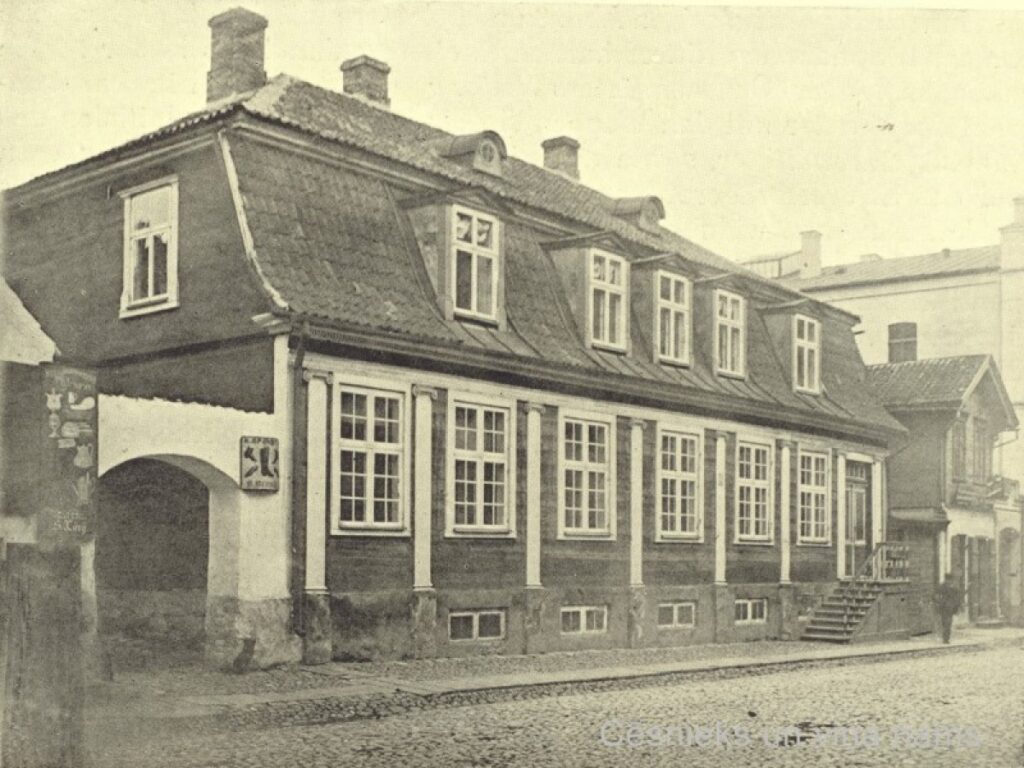The green square right in the heart of Cēsis old town is a space that shows the dramatic changes in the city’s face. Already in the 1963 map of Cēsis, the area between Rīgas and Lielā Katrīna streets had dense city buildings, crossed by two streets – Šaurā Street, which connected Lielā Katrīna Street with Rīgas Street, and Tirgus (or Mazā Katrīna) Street, which led from Lielā Līvu Street to Rožu Square.
Among the well-known buildings in this square, we can mention publisher Oskars Jēpe’s printing house, located at the corner of Lielā Katrīna and Lielā Līvu streets. Next to the printing house was a building that once belonged to decorator and Johan Kēler’s teacher Kārlis Fābers. Meanwhile, the only building that survived lonely until the 2020s was the guardhouse built by the Zīvers family on the Rožu Square side, which stood out stylistically from the other buildings.
The area went through a dramatic transformation in September 1944, when a senseless Soviet army air raid completely destroyed the buildings in this location. In the post-war years, the rubble was leveled, covered with a layer of soil, and plantings were added – that’s how Pioneer Square was created, a new urban space with a completely different function.
On November 6, 1950, a monument to Joseph Stalin was ceremoniously unveiled here, and the square became a new ideological landmark in the urban environment. The newspaper “Cēsu Stars” reported that on the day of the monument’s unveiling, “columns of working people move through the streets of Cēsis to the monument’s unveiling site,” and after the official speeches, “columns of the city’s working people and school youth march smartly past Stalin’s monument.” The monument’s author was sculptor Sergey Merkurov, who created many of the Lenin and Stalin monuments installed across the Soviet Union (including the three largest Lenin statues – one in Yerevan and two in Moscow). The Stalin monument remained here until 1962, when, along with the condemnation of the Stalin cult in the Soviet Union, it was removed.
During the Soviet years, until the installation of the Lenin monument, the square served an important ideological function – annual workers’ demonstrations and various propaganda events were held here. Next to the building at Rīgas Street 36, a Workers’ Honor Plaque was installed during Soviet rule, of which only the wall has survived to the present day. Various plantings were created along Lielā Katrīna Street.
Today, the square is going through a period of uncertainty – its development has been complicated for many years by property rights issues, as the entire square’s land is divided into more than ten properties. Over the years, various construction plans have appeared, such as building a residential house on the Lielā Katrīna Street side or a Hesburger restaurant next to the building at Rīgas Street 36, but none of these ideas have been implemented.
The materials used for the description are:
Collections of the Cesis History Museum and Cēsis Central Library
Latvian National Archive film materials

